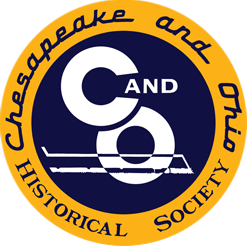

$7.95
VanSweringen Railroads – Report
This is a history of the affiliations, control, and operations of the Nickel Plate Road (NYC&St.L Railroad) and Erie Railroad by the Chesapeake & Ohio from the passage of the Transportation Act by Congress in 1920, through the Van Sweringen’s acquisition of control of the three lines, the end of the Van’s control in the 1930s, and the interests of the C&O in controlling the two other lines up until the
time the report was issued in 1940.
The Van Sweringen brothers of Cleveland began as real estate investors, then purchased the NKP and from that built a huge collection of railroads into an eastern system that roughly coincided with what the Transportation Act of 1920 called for. In the Act Congress recommended that the several large truck line railroads in the United States should be consolidated into larger and more efficient, less duplicative systems. The Vans (as they were known), collected under their control the Nickel Plate, Erie, Pere Marquette, Hocking Valley, Chesapeake & Ohio, Chicago & Eastern Illinois, Missouri Pacific (and through it control on the Western Pacific), but actually
operated only the NKP, Erie, C&O, PM, and HV through interlocking directorates or by officials who held executive offices in several of the lines.
Ultimately C&O became the dominant partner as the Vans lost control (and died) during the Great Depression. C&O finally merged Hocking Valley in 1930 and Pere Marquette in 1946. Control in NKP was relinquished in 1947. Erie was never operated by C&O officers. The relationship with it is explained in this paper, prepared for C&O executives at a meeting at the Greenbrier Hotel at White Sulphur
Springs in 1940.
38 pgs.
VanSweringen Railroads – Report
This is a history of the affiliations, control, and operations of the Nickel Plate Road (NYC&St.L Railroad) and Erie Railroad by the Chesapeake & Ohio from the passage of the Transportation Act by Congress in 1920, through the Van Sweringen’s acquisition of control of the three lines, the end of the Van’s control in the 1930s, and the interests of the C&O in controlling the two other lines up until the
time the report was issued in 1940.
The Van Sweringen brothers of Cleveland began as real estate investors, then purchased the NKP and from that built a huge collection of railroads into an eastern system that roughly coincided with what the Transportation Act of 1920 called for. In the Act Congress recommended that the several large truck line railroads in the United States should be consolidated into larger and more efficient, less duplicative systems. The Vans (as they were known), collected under their control the Nickel Plate, Erie, Pere Marquette, Hocking Valley, Chesapeake & Ohio, Chicago & Eastern Illinois, Missouri Pacific (and through it control on the Western Pacific), but actually
operated only the NKP, Erie, C&O, PM, and HV through interlocking directorates or by officials who held executive offices in several of the lines.
Ultimately C&O became the dominant partner as the Vans lost control (and died) during the Great Depression. C&O finally merged Hocking Valley in 1930 and Pere Marquette in 1946. Control in NKP was relinquished in 1947. Erie was never operated by C&O officers. The relationship with it is explained in this paper, prepared for C&O executives at a meeting at the Greenbrier Hotel at White Sulphur
Springs in 1940.
38 pgs.
| Media type | Printed, CD |
|---|
| Availability |
Now available in-store at 312 E. Ridgeway St Clifton Forge 24422 Powered With Oliver Pos |
|---|
